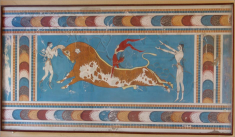Speaker
Description
Potassium-40 ($^{40}$K) is a naturally-occurring, radioactive isotope impacting understanding of nuclear structure, geological ages spanning timescales as old as the Earth, and rare-event searches including those for dark matter and neutrinoless double beta decay. In many advancing fields, the accelerating precision required for new discoveries has been limited by knowledge of the $^{40}$K decay scheme. This long-lived radionuclide undergoes electron capture decays to either the excited or ground state of its Ar daughter, of which the latter has previously not been measured, and estimates of its branching ratio are highly variable ($(0-0.8)\%$). In many dark matter searches, $^{40}$K contamination produces a challenging 3 keV background from these electron capture decays in the expected direct-detection signal region, and the ill-known ground state contribution may affect interpretation of dark matter results, such as that of DAMA/LIBRA. In geochronology, the common omission of this decay branch may affect calculated ages. This rare third-forbidden unique decay additionally provides an estimate for the associated weak axial vector coupling constant, the quenching of which affects calculated half-lives of neutrinoless double-beta decay. The KDK (``potassium decay") experiment is carrying out the first measurement of this elusive $^{40}$K branch using a coincidence technique between a high-resolution silicon drift detector to observe X-rays, and a high-efficiency ($\sim 98\%$) Modular Total Absorption Spectrometer (Oak Ridge National Labs) to tag gammas, to differentiate ground and excited state electron capture decays of $^{40}$K. We report on the $^{40}$K analysis, and the extent of its applications.
Details
The speaker is Ms. Lilianna Hariasz, Queen's University, Kingston, ON, Canada. https://www.queensu.ca/physics/
| Is this abstract from experiment? | Yes |
|---|---|
| Name of experiment and experimental site | KDK ("Potassium Decay") at Oak Ridge National Laboratory, Oak Ridge, TN, USA |
| Is the speaker for that presentation defined? | Yes |
| Internet talk | No |
